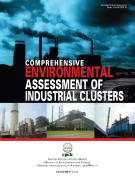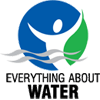Treatment and Purification
48% industrial clusters in India are critically polluted: CPCB
Posted on 10 Aug, 2010 11:38 PM A Comprehensive Environmental Pollution Index (CEPI) is a very useful tool to capture the health dimensions of the environment including air, water and land. The CEPI is intended to act as an early warning tool and can help in categorising the industrial clusters/areas in terms of priority of planning needs for interventions.
A Comprehensive Environmental Pollution Index (CEPI) is a very useful tool to capture the health dimensions of the environment including air, water and land. The CEPI is intended to act as an early warning tool and can help in categorising the industrial clusters/areas in terms of priority of planning needs for interventions.
This report by the Central Pollution and Control Board (CPCB) presents the results of the application of the CEPI to selected industrial clusters or areas.
The main objective of the study was to identify polluted industrial clusters or areas in order to take concerted action and to centrally monitor them at the national level. This was in order to improve the current status of environmental components such as air and water quality data, ecological damage, and visual environmental conditions.
Fluoride free drinking water supply in North Gujarat: The rise of Reverse Osmosis plants as a cottage industry - A study by CAREWATER
Posted on 10 Aug, 2010 10:04 PMThe study by Carewater INREM Foundation explores the rise of Reverse Osmosis (RO) plants since 1970s as a cottage industry for providing fluoride free water supply in North Gujarat.
Groundwater contamination and rural water treatment in Gujarat - a discussion paper by Carewater INREM foundation
Posted on 07 Aug, 2010 06:09 PM The state is characterized by varied hydrogeology and vast areas are faced with typical groundwater quality problems like fluoride.
The state is characterized by varied hydrogeology and vast areas are faced with typical groundwater quality problems like fluoride.
Invitation for case study submission in water magazine
Posted on 06 Aug, 2010 11:26 AM
Our publication is coming up with the annual "Case Study Special Issue” in Sept. 2010. Its a collector’s issue, where we are covering leading industries across the globe.
Impacts of groundwater contamination with Fluoride and Arsenic: A report by CAREWATER
Posted on 04 Aug, 2010 10:25 AM
The field research study conducted by Carewater INREM Foundation attempts to establish the impacts of groundwater contamination with fluoride and arsenic in India. It maps the affliction severity, the medical cost and wage loss through a multi-location study in some villages in the States of Rajasthan, Andhra Pradesh, Karnataka and West Bengal.
Reverse Osmosis plants for rural water treatment in Gujarat - A study by CAREWATER
Posted on 03 Aug, 2010 10:21 PM The report by Carewater INREM Foundation deals with Reverse Osmosis (RO) technology, which is emerging as an important solution for drinking water treatment in rural Gujarat. RO plants with capacity ranging from 10 litres per hour (lph) to 6000 lph are now supplying drinking water in several hundred villages of the State. Small sized plants with capacity < 20 lph are used by individual families whereas medium to large sized plants (>100 lph) are being used for public consumption.
The report by Carewater INREM Foundation deals with Reverse Osmosis (RO) technology, which is emerging as an important solution for drinking water treatment in rural Gujarat. RO plants with capacity ranging from 10 litres per hour (lph) to 6000 lph are now supplying drinking water in several hundred villages of the State. Small sized plants with capacity < 20 lph are used by individual families whereas medium to large sized plants (>100 lph) are being used for public consumption.
5th Global YES Summit, Rework The World - A trip report
Posted on 26 Jul, 2010 11:17 PMHad the opportunity to attend a recent worldwide gathering on the topic of youth and social entrepreneurship, which gave much food for thought. The event was the 5th Global YES Summit, entitled “ReWork The World”. Details of the gathering are at www.reworktheworld.org . The message there was that we need to do something radical in order to find productive work for the vast numbers of youth coming into the workforce especially in developing nations. The new jobs cannot be of the old variety, they need to be green, sustainable jobs. In other words, we need to ‘rework the world’. The conference was based on the premise that these new jobs will come out of social entrepreneurship.
History of water filters - Past, present and future of water filtration technology
Posted on 11 Jul, 2010 02:16 PMThe History of Water Filters website, has interesting and useful information on water filters, water treatment alternatives and water quality.
A study of saline freshwater interface phenomena in the Mahanadi delta region (Orissa)
Posted on 10 Jul, 2010 10:40 PM The subsurface aquifer systems in Mahanadi delta region in Orissa (India) is largely characterized by two groups of freshwater aquifer systems, both of which are prone to saline water mixing/migration with time and development:
The subsurface aquifer systems in Mahanadi delta region in Orissa (India) is largely characterized by two groups of freshwater aquifer systems, both of which are prone to saline water mixing/migration with time and development:
- The south western Mahanadi delta region is represented by unconfined to semi-confined freshwater aquifers underlained by brackish/saline aquifer systems with a diffusion boundary.
- The north eastern parts of Mahanadi delta is represented by deep freshwater confined aquifers overlained by brackish/saline water aquifers with aquitard/ aquiclude boundary.
Optimal operation of groundwater skimming wells A study of 90 wells along the river Yamuna at Palla,North Delhi
Posted on 02 Jul, 2010 04:49 PMAbstract





